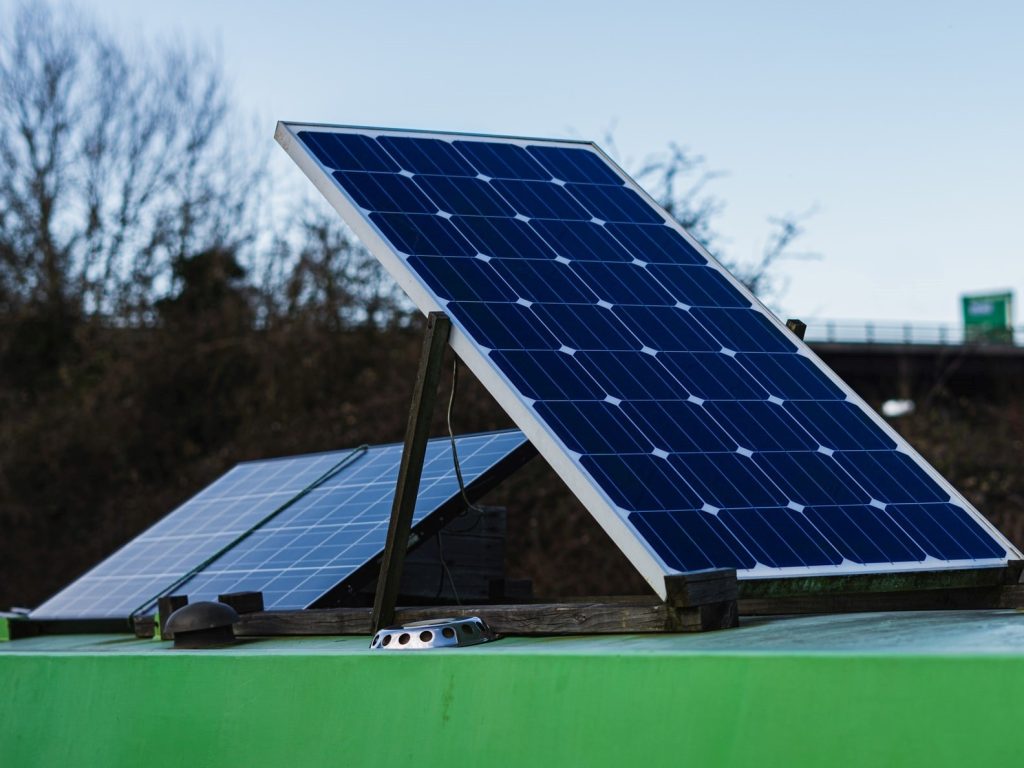PV solar panels convert sunlight into electricity. That means as more sunlight reaches the surface of the panels, they produce more electricity. However, the sun moves across the sky throughout the day. In addition, the sun shifts position in the sky with the months of the year. That may be less noticeable at the equator but is very prominent further north or south from it. As this happens, the amount of direct sunlight reaching the solar panels will change during the day. The production of electricity thus changes drastically between the morning, noon, afternoon, and throughout the year.
There are two main options to maximize the production of electricity. Either by using a tracking mount or installing the panels at an optimal position.
Sun Tracking Mounts
After reading the introduction, this is the first idea to come to mind. Why not have a structure that moves the solar panels to follow the sun?
There are many variations of this structure, called a sun-tracking mount. Some tracking mounts follow the sun on the east to west axis, from sunrise to sunset. Other tracking mounts follow the sun’s inclination, so they move less frequently but account for the changes of the sun’s position over the year. And there are advanced versions of these tracking mounts that follow the sun across two or more axes.
Due to the increased cost of the tracking mounts compared to fixed ones, they only make sense when the area available to install panels is limited. For domestic use, the roof area is large enough to collect sunlight on a fixed mounting structure to provide the energy needed for the house. The additional electricity produced when using the tracking mount is not large enough to justify the cost for small-scale applications. With the decreasing cost of solar panels, it makes more sense to buy extra panels instead of spending that money on a tracking mount.
Finding the best position for fixed structures
The best position for fixed solar panels varies between the different locations on Earth. To accurately position the panels, you should be familiar with two angles:
- The inclination angle or slope: the angle of the solar panels from the ground.
- The orientation angle or azimuth: the angle of the solar panels relative to the South on the compass. The panels must face that direction, so the lower part of the panel will be pointing in that direction.
To get these angles, you can use online calculators. The European Commission makes available the Photovoltaic Geographical Information System (PVGIS) that offers interactive tools to simulate the performance of PV system configurations.
Step by step instructions:
- Go to the PVGIS website.
- Choose the location on the map.
- To the right of the map, you will find several options to simulate. Choose the “Grid Connected” option.
- Check the “Optimize slope and azimuth” option.
- Click visualize results.
The results of the simulation will appear. Under the “simulation options” in the results, you will find the optimal slope and azimuth angles it has calculated.
For Beirut, Lebanon, the optimal slope is 29° and the optimal azimuth is -2°, which means facing south. On the right of the results, there is an outline of the horizon showing the sun’s height and azimuth in June and December. Therefore, in Lebanon, the sun is much higher during the summer than in winter. That significantly affects the amount of solar radiation reaching the solar panels.
What if the position is not optimal?
If you plan to install solar panels for an existing building, you have a limited area to install the panels. In that case, it may be possible to install a fixed mounting structure to raise the panels to a better angle. Even if that is not possible, solar panels still function at any angle, even if the electricity output is a little lower. Of course, pick the side of the roof that is closer to the optimal angles calculated to make the most out of the installation. Most importantly, ensure that the area does not get any shading from nearby trees or buildings. In that case, you can measure the slope and orientation and enter them into the online calculator. The calculator will simulate the energy you can expect to produce at that angle.
